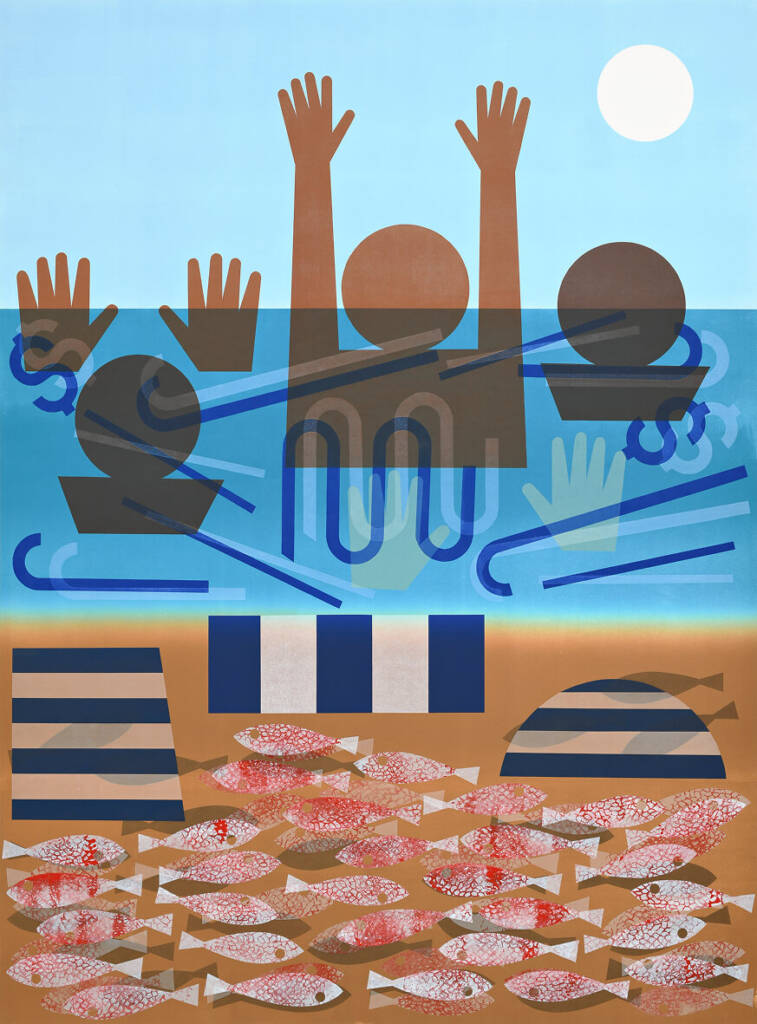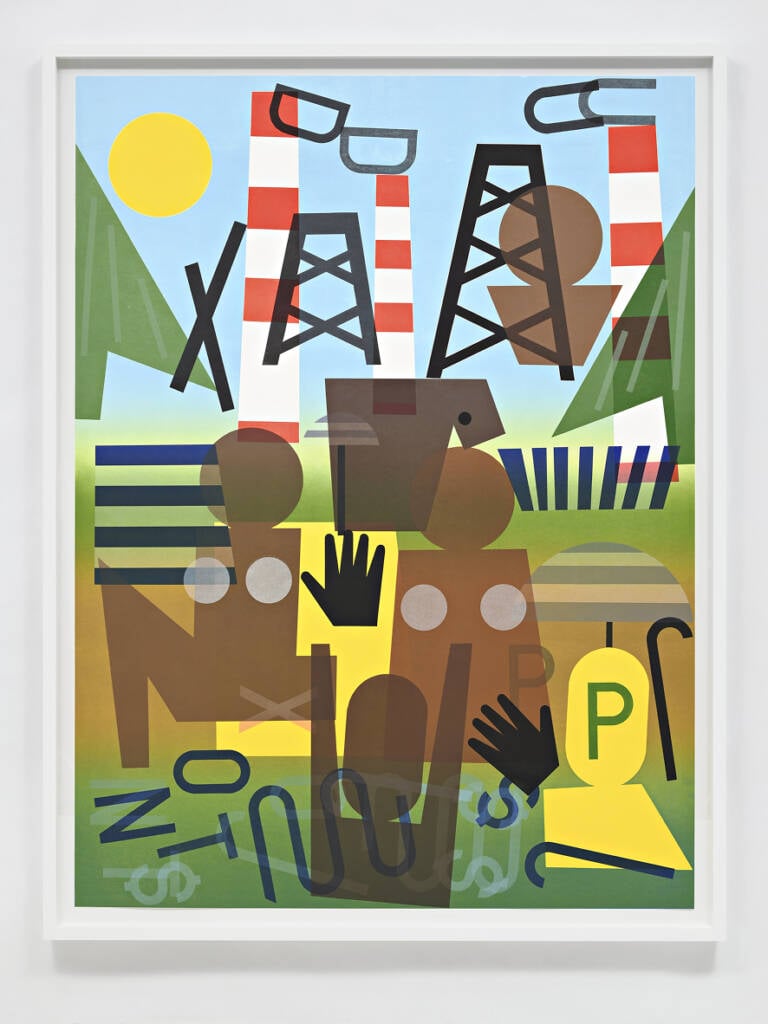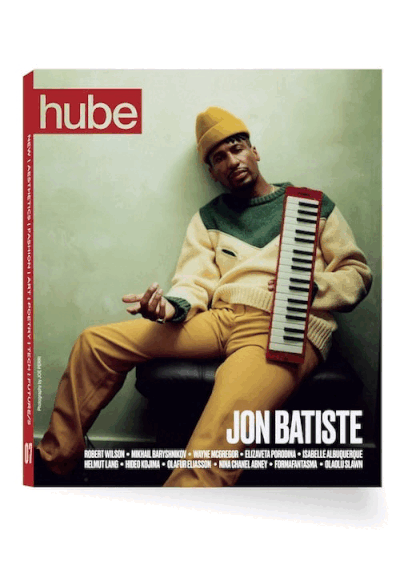Encountering the work of New York-based artist Nina Chanel Abney is to see art history metabolised and remade: the cubist work of Pablo Picasso, the modernist experiments of Fernand Léger, and the vibrant palettes of Harlem Renaissance painters Aaron Douglas and Jacob Lawrence collide and metamorphose into a graphic style that is wholly contemporary and unmistakably Abney’s own.
Her densely layered and intensely coloured compositions are complex and contradictory: theatrical and serious, abstract and intimate, frenetic and deliberate. Motifs recur, split, and scatter; familiar images are dismantled and reassembled to unsettling effect. As Abney says, “undoing what feels fixed” is how she fractures inherited hierarchies of meaning, turning representation into a space for disruption rather than reflection.
Abney’s work engages with the continued trauma of colonialism, racialised violence, the queer experience, and the coded visibility of Black bodies in art and popular culture—but never in an overly explicit way. Her audience is compelled to look beyond the surface of form and figuration, in doing so they uncover ‘truth’ as something provisional and self-generated. This refusal of fixed meaning is not an evasion but a deliberate strategy. As Abney tells hube, “I am not interested in preserving systems that were never built with me in mind. Unlearning is part of the process.”
This September, Abney debuts her first solo exhibition in Paris at Perrotin. Now What? Or What Else? (September 6th–October 11th, 2025) captures the strange poetry of everyday life against a backdrop of social and ecological upheaval. Don’t miss this project!
hube: Artists often create space for emotions that exist between the uncertainty of life and the stability we get from our convictions and beliefs. How do you connect the rational and the emotional in your practice?
Nina Chanel Abney: I’m intuitively working through emotion and reason at the same time, responding in real time until something feels honest. That honesty often holds contradiction or ambiguity, and I don’t try to resolve it. The work becomes a form of visual note-taking, a recording of an attempt to strike a balance that can never really be struck. It’s about sitting with that tension, not forcing clarity.
h: Time and space are fundamental concepts in physics, yet even for scientists they can be elusive—phenomena that transcend pure rationality. You seem to navigate them with ease. Do you see this as a privilege of being an artist?
NCA: I don’t think I navigate time and space with ease. I just work in a way that lets me respond in real time. Painting helps me make sense of everything that feels overwhelming, fast, and disjointed. I’m not trying to control time or explain space. I’m reacting to how unstable it all feels. As an artist, I get to bend time, stretch it, layer it, let contradictions exist. That’s a necessity because the world doesn’t slow down. I need the work to hold space for what real life doesn’t always allow.

CATCH AND RELEASE, 2025
Ink on paper
152.4 x 101.6 cm
Courtesy of NINA CHANEL ABNEY and PERROTIN

MAKE IT ENOUGH, 2025
Ink on paper
159.1 x 116.8 cm
Courtesy of NINA CHANEL ABNEY and PERROTIN

